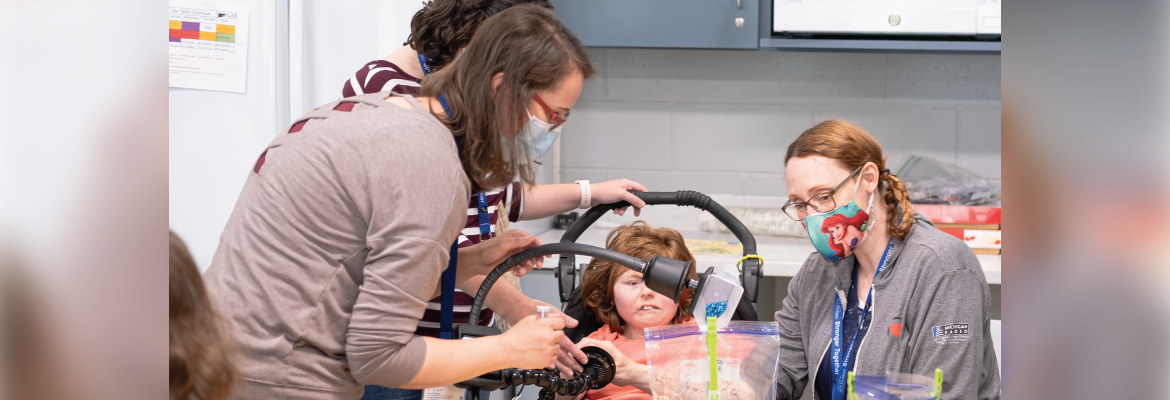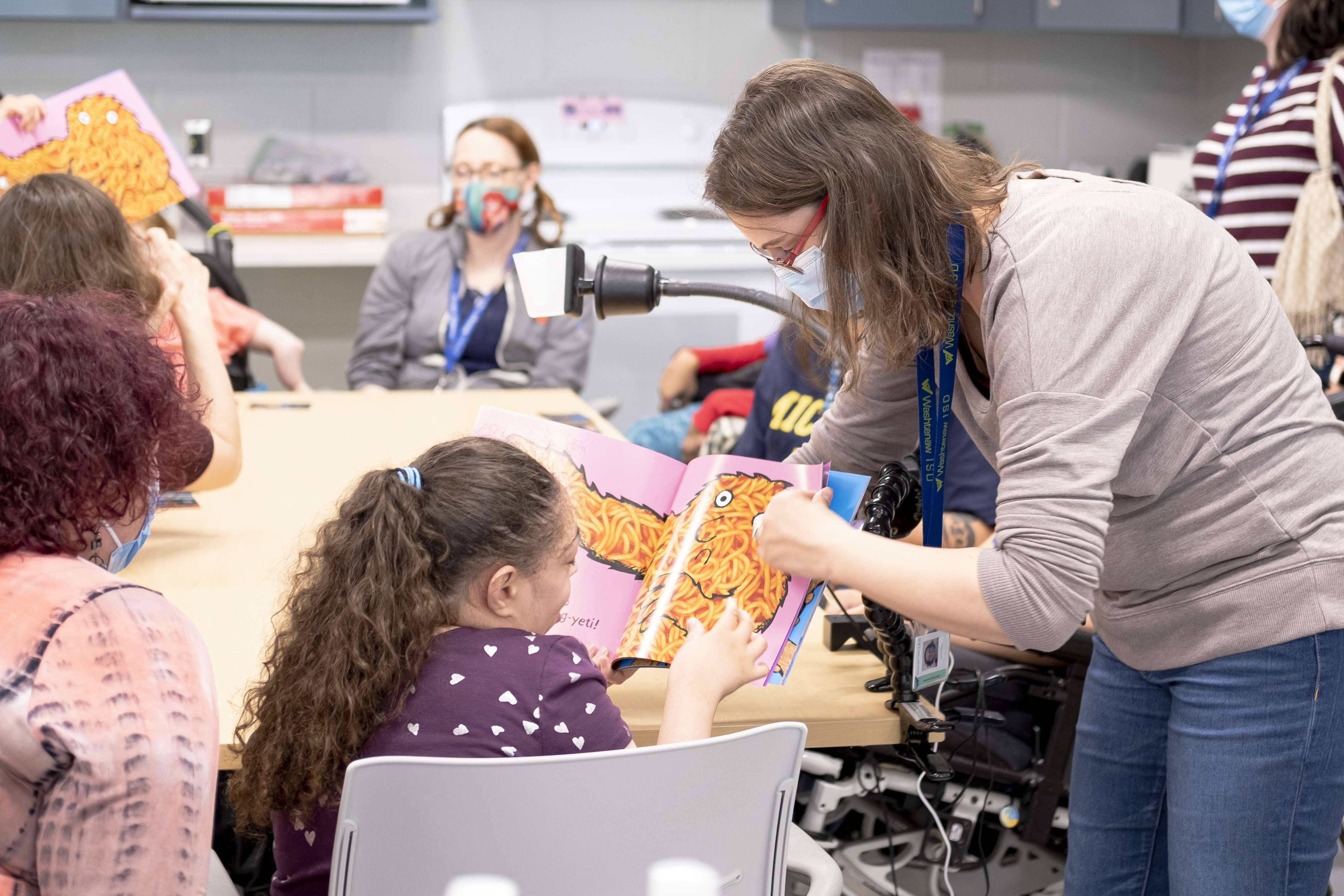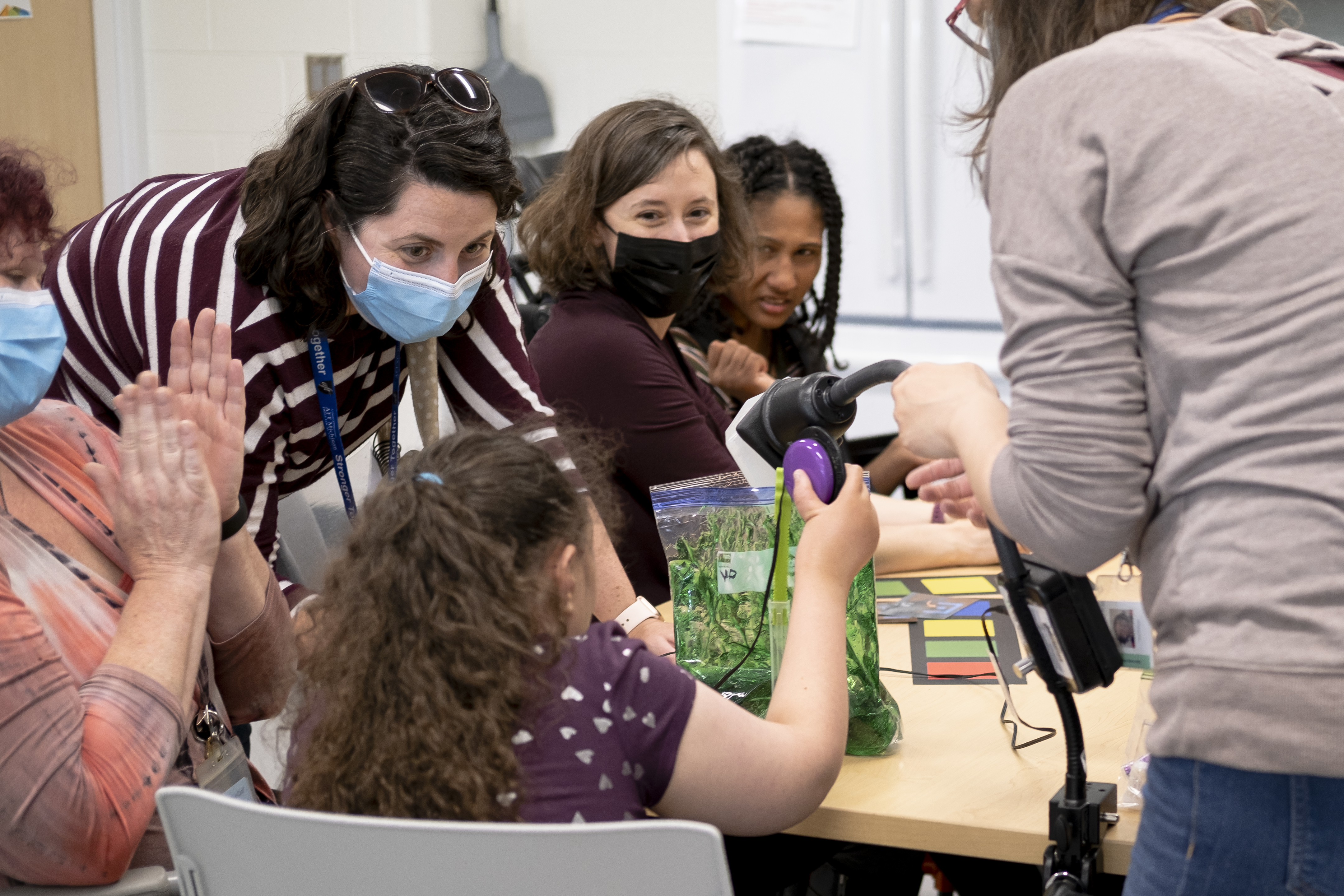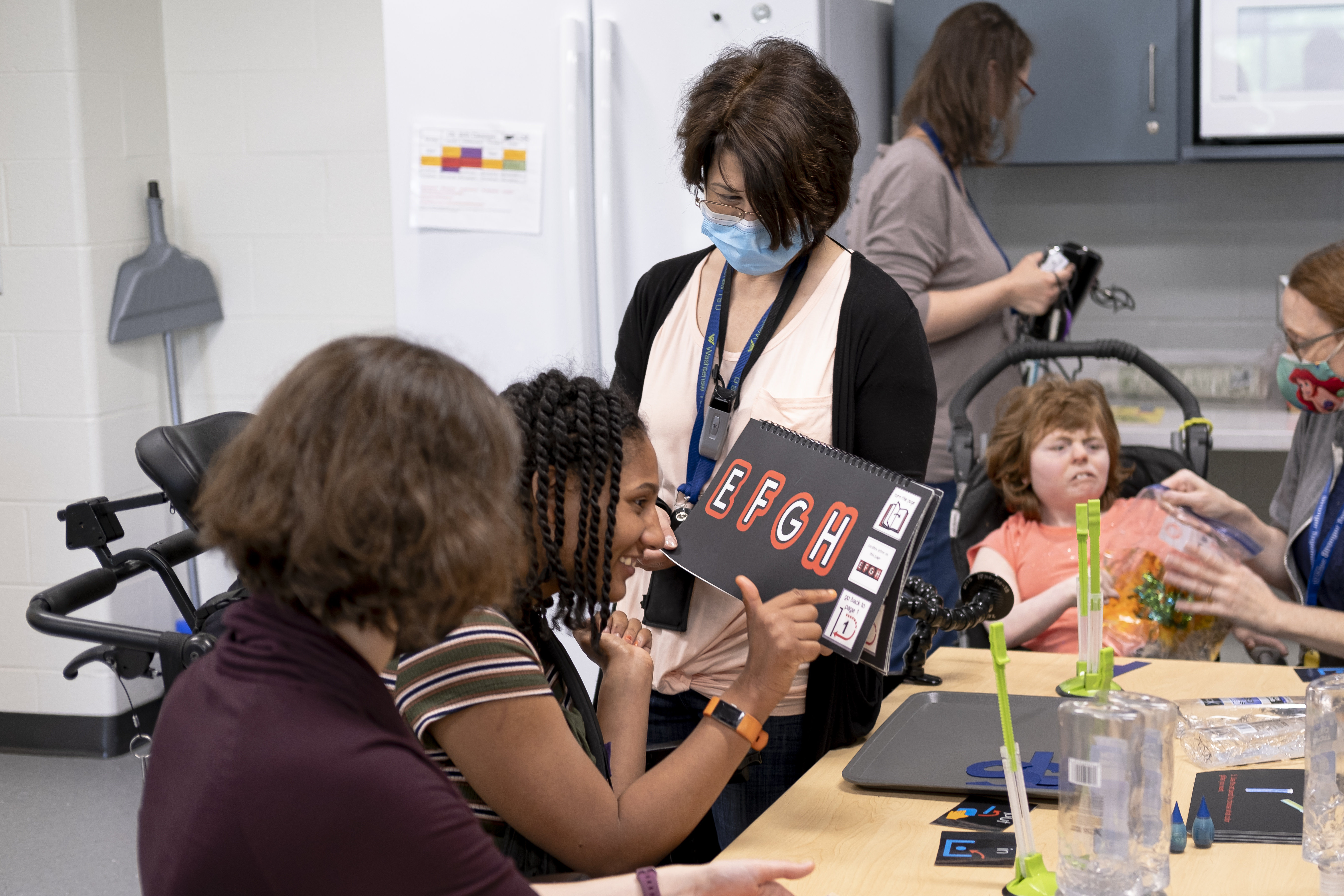
Over the past couple years, teachers around Michigan have attended virtual and in-person trainings from the Michigan Department of Education – Low Incidence Outreach (MDE-LIO) to learn about independent living skills (ILS).
Many of the teachers have found creative ways to incorporate ILS into instructional sessions with their students. Jessicia Klenk, a teacher consultant for students who are visually impaired (TCVI) at Washtenaw Intermediate School District, has taken a fresh approach to incorporating these skills with her students who are Blind/Visually Impaired (BVI) and have multiple impairments.

During the school year, Klenk co-runs a class on daily living skills for five students, ages 18 – 26. She is joined by Joanne McKelvie, a teacher of students with severe and multiple impairments; Ashley Robinson, a speech and language pathologist; and several teaching aides. For each lesson, Klenk, McKelvie, and Robinson try to find ways for each student to participate and make choices.
Example Lesson: Sensory Bags
A recent lesson helped students practice the skill of putting one item into another. To start, McKelvie read aloud a book called Don’t Put Your Finger in the Jelly, Nelly. As McKelvie walked around the classroom while reading the book, the students practiced putting their fingers through the hole in each page.
Each student then followed a recipe to put hair gel, glitter, and letters in a plastic bag to create a colorful sensory bag. Klenk, McKelvie, and Robinson first talked through the steps of making the bags, using images of the items that would go in each bag. Robinson used a handmade high-contrast book featuring an image of each ingredient against a black background with the ingredient’s name outlined in red. This is particularly helpful to use with students who have cortical visual impairment (CVI).
CVI concepts were also used to help students choose which glitter and food coloring they wanted to add to their bags. The teachers presented high-contrast choice boards to the students with a black background and simplified images outlined in red.
 After adding gel and food coloring to their bags, Klenk took an innovative approach to helping students add glitter. Klenk had attached a cup to a mechanical arm, which she then connected to a large purple button called a switch. When the switch was pressed, the mechanical arm turned the cup to slowly pour the glitter. As each student took their turn to press the switch, the room grew silent. Smiles bloomed and cheers erupted after each successful pour.
After adding gel and food coloring to their bags, Klenk took an innovative approach to helping students add glitter. Klenk had attached a cup to a mechanical arm, which she then connected to a large purple button called a switch. When the switch was pressed, the mechanical arm turned the cup to slowly pour the glitter. As each student took their turn to press the switch, the room grew silent. Smiles bloomed and cheers erupted after each successful pour.
In the future, Klenk wants to find more ways for students to actively participate and have more independence, whether they incorporate more adaptive kitchen tools or switch-controlled devices.
“I’m always thinking, ‘What else can we plug a switch into?’” she said.
After pouring the glitter, students were asked to identify the first initial of their name. Robinson showed each student an alphabet book with large letters highlighted in red, from which the students could choose their initial. A plastic letter was then added to each student’s bag.
As the activity wrapped up, each student selected their favorite item in the bag and completed the sentence, “I put in [object.]”
Time for Planning
 Teaching ILS takes time and planning. To come up with a game plan for each week’s lesson, Klenk, McKelvie, and Robinson meet once a week for about 30 minutes. Each 40-minute lesson reinforces the main skill multiple times and packs in a lot of learning: The sensory bag lesson included literacy, ILS, communication, decision making, color and letter identification, and other skills.
Teaching ILS takes time and planning. To come up with a game plan for each week’s lesson, Klenk, McKelvie, and Robinson meet once a week for about 30 minutes. Each 40-minute lesson reinforces the main skill multiple times and packs in a lot of learning: The sensory bag lesson included literacy, ILS, communication, decision making, color and letter identification, and other skills.
“Jessicia threw me the idea,” McKelvie said. “I came up with my part, and she came up with her part. It’s fun.”
When asked about the benefits of the class, Klenk said she noticed the students had grown in their decision-making skills during the sensory bag lesson, and they had all patiently waited their turn to pour glitter.
Robinson added that the class has helped break down barriers for students, in terms of communication and participating in activities. Each lesson incorporates ways for students to make choices: Students can use eye gaze, choice boards, or other adaptive methods to make decisions.
“Students are able to say, ‘I get it and can make a choice,’” she said.
Incorporating ILS into Your Lessons
It doesn’t take special equipment or a lot of time to incorporate ILS lessons with your students. To get started with a few ideas, visit MDE-LIO’s Independent Living Skills page for the following resources:
- ILS Modules with sample lessons, templates, and checklists
- Five-Minute ILS document for quick ILS activities
- ILS Calendars for students to practice ILS at home
